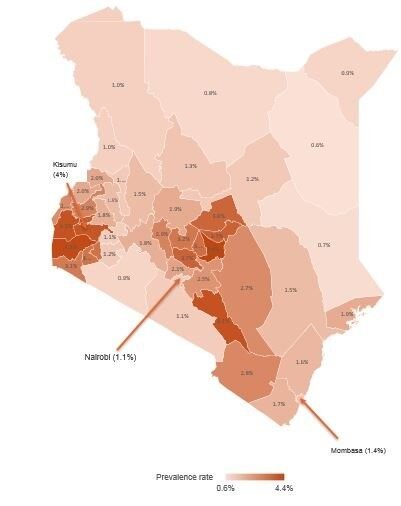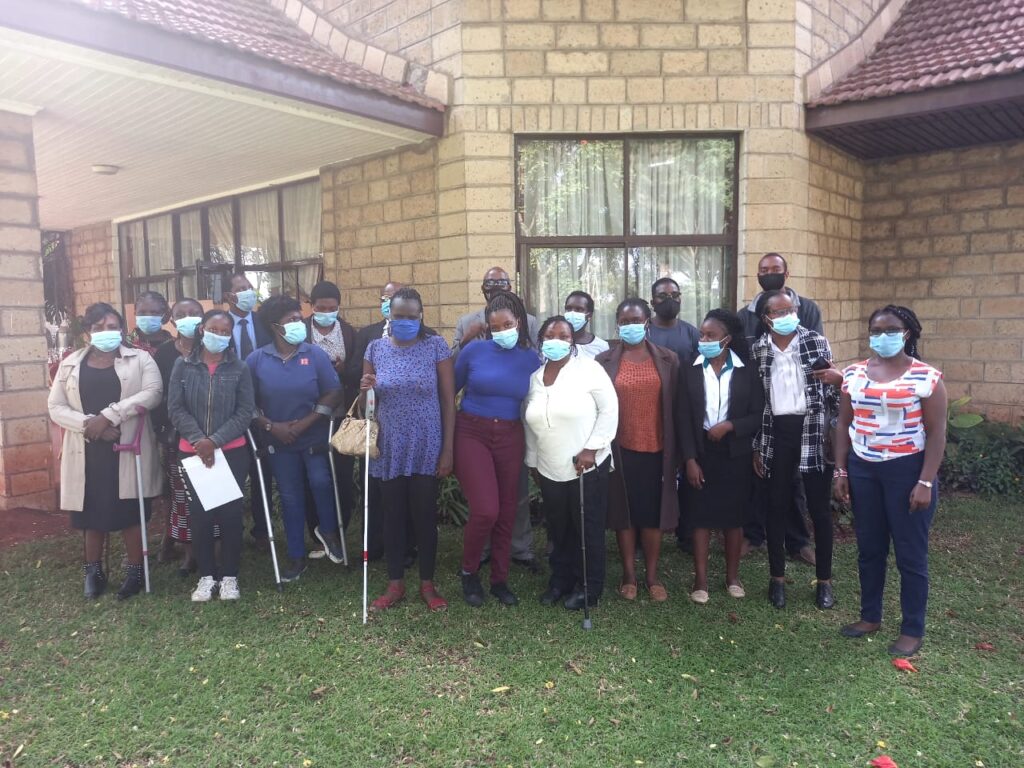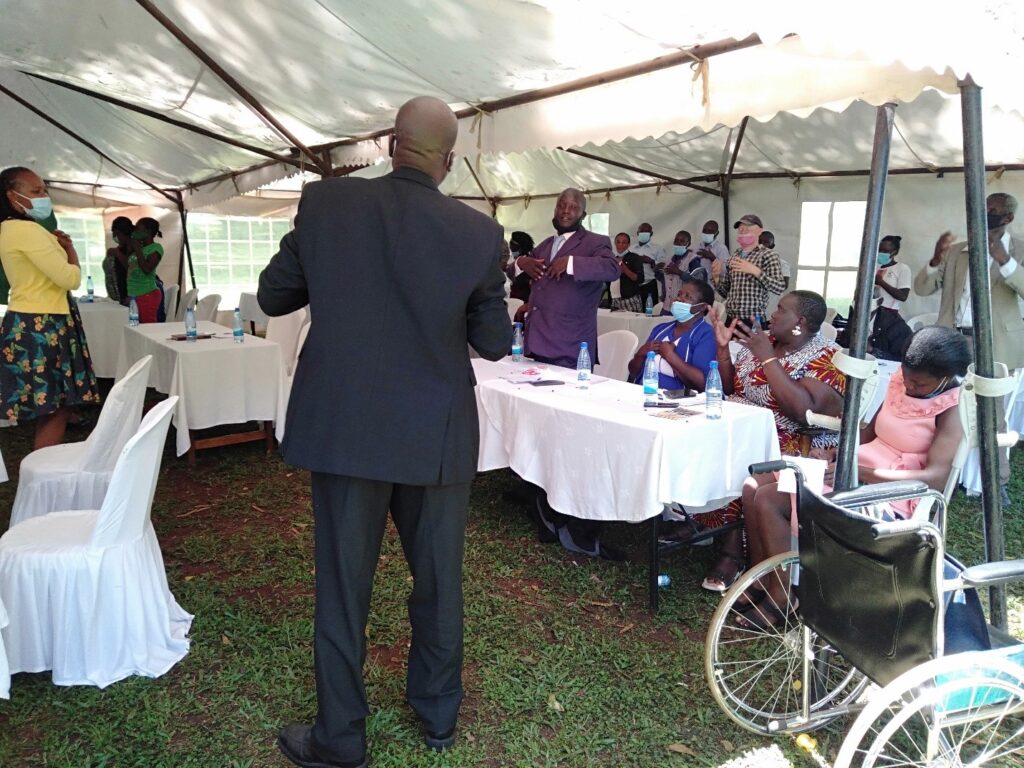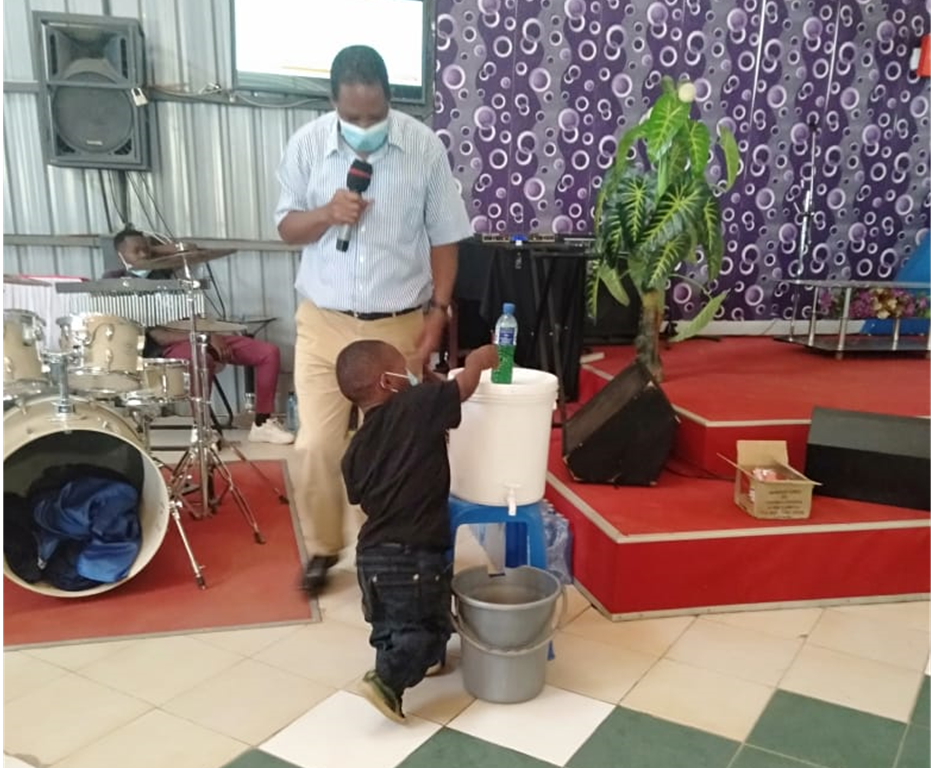The COVID-19 pandemic has affected our lives in an unprecedented manner and has raised many novel and complex issues, which impact “normal living”. This has been especially worse for the most marginalized/vulnerable groups, including Persons with Disabilities (PWDs). They have been disproportionately impacted due to attitudinal, environmental, and institutional barriers that are reproduced in the COVID-19 response.
Despite being a population that is particularly at-risk to COVID-19, persons with disabilities face even greater inequalities in accessing health information and care during the pandemic. There are hardly any COVID-19 prevention and control interventions focused on this special group and their needs. Persons with disabilities who are reliant on caregivers to aid with common daily tasks are at higher risk of contracting COVID-19 especially where physical distancing and isolation measures may be challenging or impossible to practice. Assistive devices like walkers, wheelchairs, walking canes, white canes, crutches and other aids are also potential spots of coming into contact with the Virus.
The UN Convention on the Rights of Persons with Disabilities (UNCRPD) recognizes Persons with disabilities to include those who have long-term physical, mental, intellectual or sensory impairments, which in interaction with various barriers may hinder their full and effective participation in society on an equal basis with others. Kenya is one of the 163 countries that have signed the UNCRPD, which stipulates that humanitarian responses must be disability inclusive (Article 11). According to the 2019 Census, 0.9 million Kenyans (representing 2.2%) live with a form of disability; a significantly lower and disputed prevalence compared with the 15% global estimate by WHO. There are more persons with disabilities living in rural than urban areas, majority of whom are male.

Designing Targeted Communication for Persons with Disabilities.
In response to the glaring gap and underpinned by the frameworks of the UNCRPD and SDGs, and the commitment to ‘leave no one behind’, Amref’s HBCC Project in collaboration with the State Department of Social Protection under the Ministry of Labor and Social Protection – Department of Social Development designed a social & hygiene behavior change communication intervention for persons with disabilities. The intervention targeted the five main disability cohorts in Kenya; the physically impaired, visually impaired, hearing impaired and intellectually impaired in the 10 HBCC Counties in both rural and urban areas; (Embu, Meru, Kisii, Migori, Siaya, Homabay, Kakamega, Kwale, Mombasa and Nairobi). The programme sought to understand and respond to the specific needs of persons with disabilities through in-person capacity building and increasing access to products and services including educational material and appropriate face masks.
In the “nothing about us without us” approach, the program constituted a team of actors within the disability world to identify the specific needs and priority interventions; develop a comprehensive communication manual & toolkit to address the challenges as well as identify communication channels and monitoring & evaluation mechanisms. In development of the communication manual, the team reflected on the existing realities and developed actionable messages on preventive measures against COVID-19 including management of related waste, food safety, the roles of caregivers, and psychosocial support for persons with disabilities during the pandemic.
The team comprised of representatives from the State Department of Social Protection in the Ministry of Labor and Social Protection, Ministry of Health, National Council for Persons with Disabilities, Ministry of Education (Directorate of Special Needs Education), Kenya Institute of Curriculum Development, Teachers Service Commission, Sight Savers, Association of Physically Disabled of Kenya, and United Disabled Persons of Kenya, and the HBCC programme team at Amref Health Africa. Content developed was later validated by stakeholders from the National
Disabled Persons Organizations and Associations including The Kenya Society for the Blind, Kenya Association for the Intellectually Handicapped, Association of Physically Disabled of Kenya, Kenya National Association for the Deaf, United Disabled Persons of Kenya, Action Network for the Disabled, and the National Council for Persons with Disabilities.

The Intervention
The intervention was aligned with the main campaign of the larger HBCC programme dubbed ‘The PASSWORD to take your world back from Corona is HandFaceSpace’ that seeks to leave no one behind, and the programme’s theory of change adapted from the Behavior Change Design (BCD) Model.
In this intervention, DPOs, caregivers of learners in special needs institutions, and registered Disabled Person’s Self-Help Groups at the grassroots level became our instruments of choice. This is because they play major roles in the everyday living of PWDs including acting as referral mechanisms; identifying persons, supporting individuals, while also sharing information with their members, and influencing the response. Using the developed training manual and other educational materials, a total of 4,050 persons with disabilities and caregivers from special schools and self-help groups were trained as TOTs. The training was conducted in simple, easy understand & remember – participatory methods whereby discussions and demonstrations were conducted using relatable examples and the most understood language. For the visually impaired, training materials were provided in braille while simple language was used for the deaf and the intellectually impaired. Sign language interpreters were also involved throughout the training.

The key behavior change messages were contextualized to persons with disabilities and their special considerations were taken into account. The TOTs were tasked to use the existing structures within their groups/organizations/institutions to cascade the communication for behavior change among their fellow individuals. The participants received some essential COVID-19 prevention commodities including 10,000 masks, 1000 sanitizers which they could also share with their colleagues as they communicate to them about the key preventative behaviors.
As the COVID-19 vaccine was introduced in the country, the master TOTs from the Ministry of Health took advantage of the opportunity and provided vaccine literacy and promotion to persons with disability.
During this activity, the project received immense constructive feedback across the 10 counties. It was one of a kind as one of the SDOs stated; “Persons with disabilities are never brought together in meetings, they are always represented by one of them, it is good to see them reached directly”. The activity revealed the vulnerability of persons with disabilities and older person and their caregivers which even made senior officials confess how they had not realized some basic issues among this population segment. A caregiver from a special needs institution in Kakamega identified “This is the first time I have received this kind of training. Most of the time, it is the teachers who are trained but those of us who are in direct contact with them most of the time are left out”.

